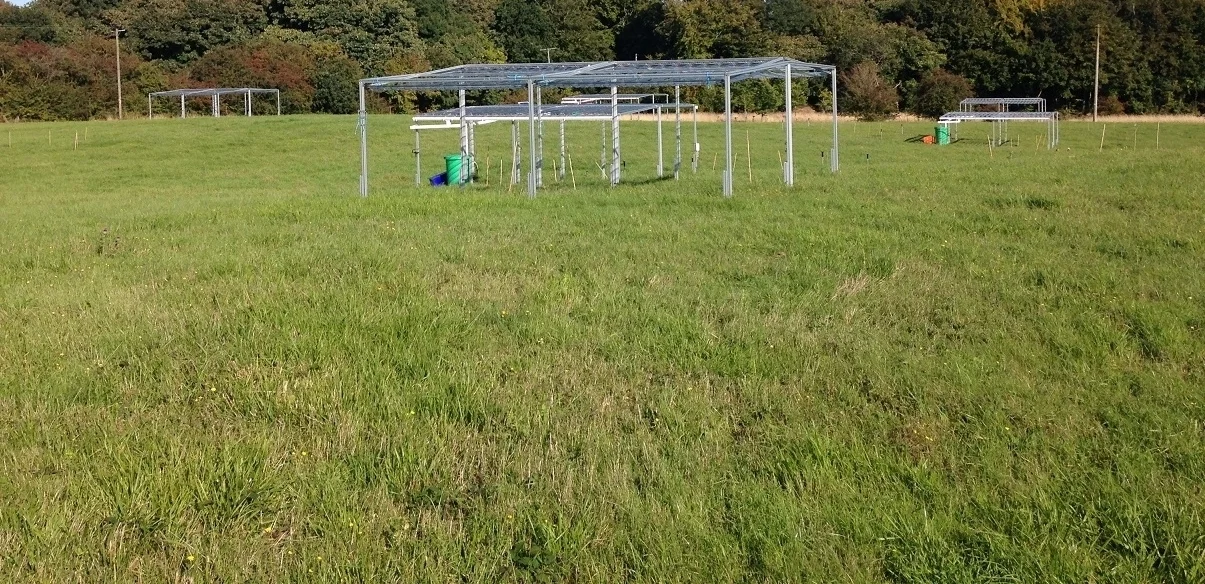Initiated in 2016, RainDrop provides a platform for research on the short and long term impact of flooding and droughting.
Based in Wytham Woods, on very pretty calcareous grassland, the site is a series of five blocks, each with two rain-shelters. One shifts 50% of the precipitation over to an irrigated plot, the other is a procedural control, which sits alongside an adjacent control plot. Then within each plot there are four subplots that can be used for different experiments.
During the summer of 2016, I was lucky enough to take over one of these plots for my second year undergraduate research project.
To investigate how flooding and droughting affects ecosystem health, I measured percentage cover at species and group level, biomass changes at group level, and the changing rate of soil decomposition. The last of these sub-experiments was based on the innovative Tea Bag Index (Keuskamp et al. 2013). This uses the differential decomposition rates of Green and Rooibos tea to capture various aspects of soil decomposition.
Despite the protocol not working due to issues with tea bag integrity and drying, refining these tools for rapid ecosystem assessment is crucial if we as ecologists are going to diversify our field, and the tea bag index really is a neat idea!
Coming to the project with little botanical experience it was an absolute delight to work in collaboration with Melanie Stone from the Open University, who is doing her PhD on site. A key lesson I have learnt is that no amount of preparation in terms of maps, field guides or plant databases can substitute for a good eye when it comes to identification. My eye definitely improved over time!
Whilst we did not find a significant shift in the species diversity or chao single site index* with short term acute droughting or flooding, my own appreciation for the incredible beauty and diversity of calcareous grasslands increased dramatically!
Using Grime’s Mass Ratio Hypothesis (Grime 1998) and Silvertown’s theory of hydrological niche segregation (Silvertown et al. 2015) I predicted there would be a shift in the hydrological nichespace available under droughting and flooding conditions. This in turn would lead to a decrease in species abundance at the edge of that nichespace, occurring at a faster rate than changes in species diversity or richness. Evidence for this on site came from a significant drop in grassy dry biomass under droughted conditions, and in the future I would be excited to see more work on site on how the community composition itself changed.
RainDrop provided a fantastic platform on which I could undertake my research and it was a pleasure to be involved with the project during its first field season, helping explore the possibilities it provides.
* This is a statistical upper bound for the projected species richness based on sampling effort
Find out the latest updates on the site blog managed by PhD student Melanie Stone.






